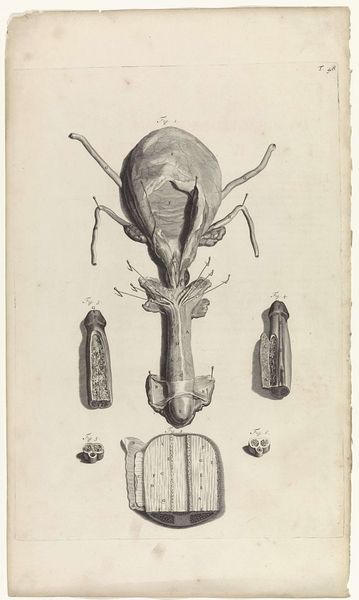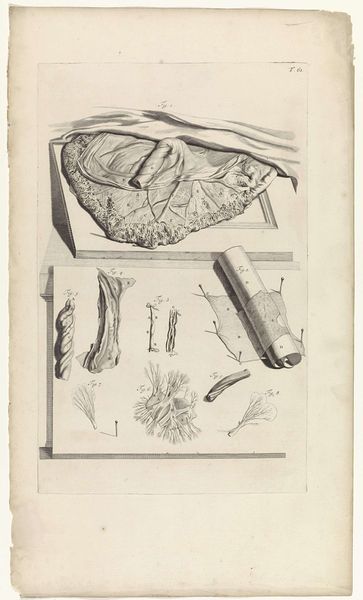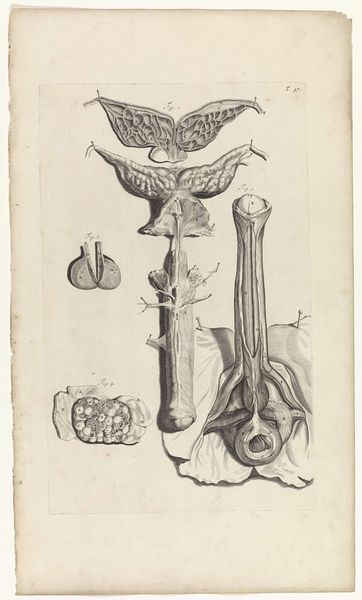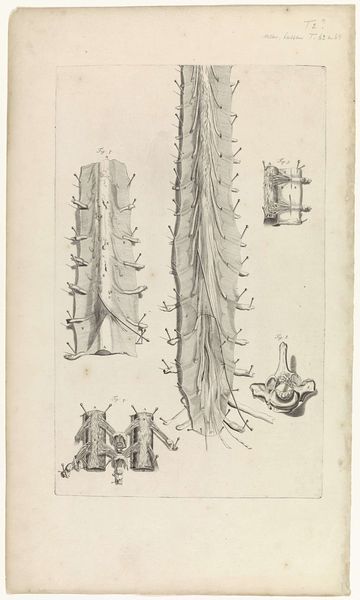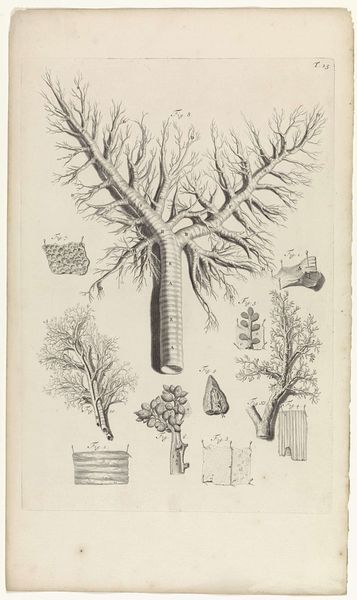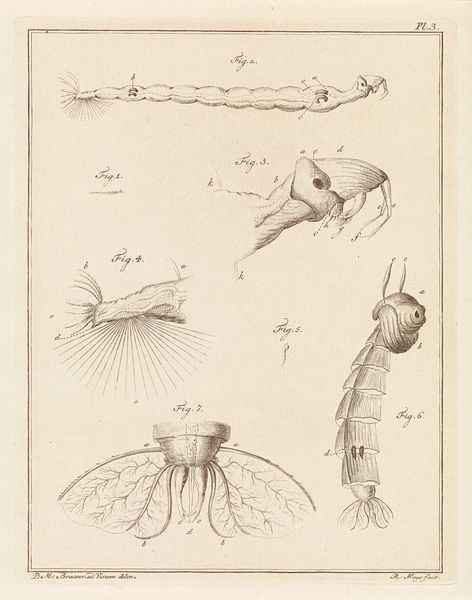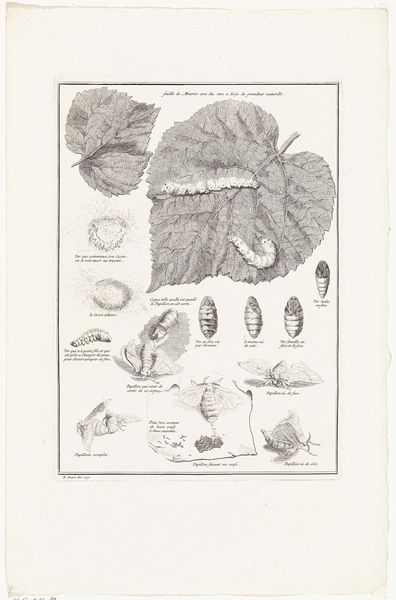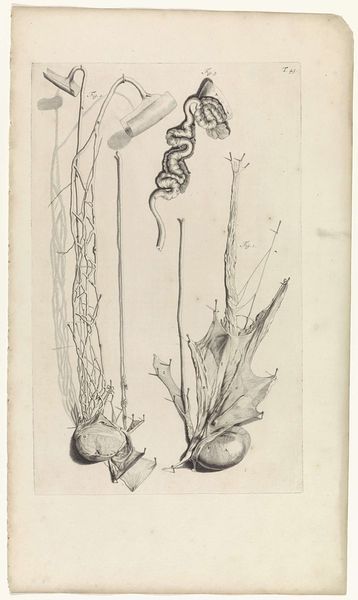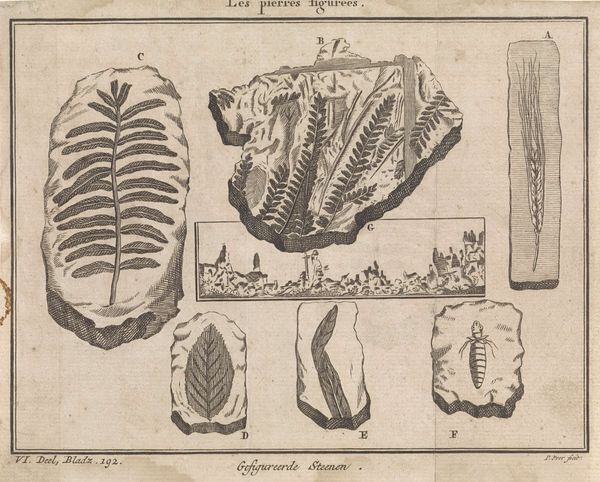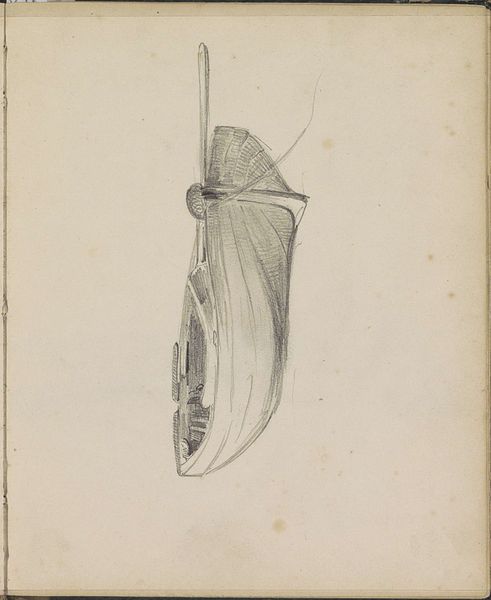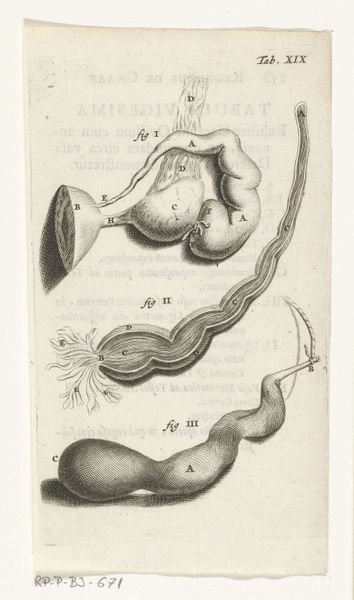
drawing, ink
#
drawing
#
baroque
#
form
#
ink
#
line
#
history-painting
Dimensions: width 278 mm, height 443 mm
Copyright: Rijks Museum: Open Domain
Curator: Looking at this work, the first thing that comes to mind is how intricate the lines are. Is it just me, or does it also strike you as slightly unsettling? Editor: It does have an odd clinical detachment. We're looking at "Anatomische studie van de galblaas," or "Anatomical study of the Gallbladder," created around 1685. It's an ink drawing by Pieter van Gunst currently held at the Rijksmuseum. Curator: It feels like a specimen meticulously pinned down, the branching vessels like some morbidly beautiful tree. The gallbladder itself, rendered with such precise detail, is…well, alienating. It’s more diagram than visceral experience, which makes it feel uncanny, even centuries later. Editor: Absolutely, and it’s important to consider the rise of anatomical studies and medical illustration at the time. Artists were essential in documenting and disseminating medical knowledge. This wasn’t just art for art's sake; it served a vital public function, bridging the gap between scientific observation and general understanding. The scientific revolution changed our perceptions and institutions significantly, this detailed representation certainly shows a piece of that puzzle. Curator: I wonder about the emotional impact on viewers then and now. Did people in the 17th century react with a similar unease? Or was the act of seeing internal anatomy laid bare revolutionary, and awe-inspiring more than unsettling? How many people would see their inner world in plain visual terms? Editor: That’s the crux of it. The accessibility of such images had profound effects. It democratized medical understanding in a way, allowing more people to engage with their own bodies on a visual and intellectual level. It helped shape understandings of medicine, but also understandings about our own bodies for many. Curator: Even with its disquieting effect on me, I see how the visual language here speaks volumes about how the boundaries of art and science continue to intertwine, challenging and reshaping our notions of representation itself. Editor: Yes, a prime example of art deeply embedded in social and intellectual shifts of its time, changing perception one carefully rendered ink line at a time.
Comments
No comments
Be the first to comment and join the conversation on the ultimate creative platform.
